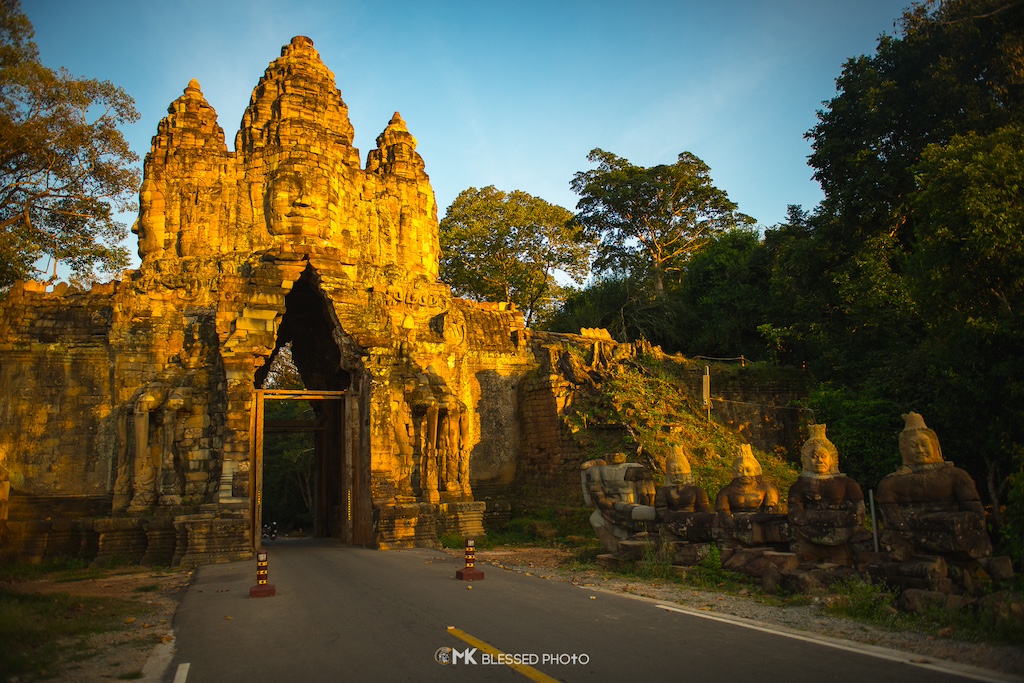(Photos by: Apsara National Authority)
Victory Gate of Angkor Thom: The Triumphal Entrance to Ancient Glory
The Victory Gate, one of the five main gates of Angkor Thom, the last capital of the Khmer Empire, is a monument steeped in historical significance and architectural grandeur. Located on the eastern wall of Angkor Thom, this gate is often referred to as the gateway of triumph, used by the king and his army after victorious battles.
Built-in the late 12th century under the reign of King Jayavarman VII, the Victory Gate shares architectural features with the other gates of Angkor Thom, including the iconic face towers. These towers, bearing the serene faces of the Bodhisattva Avalokiteshvara, symbolize the omnipresent watch of the king over his empire.
The gate's entrance is adorned with intricate carvings and bas-reliefs, showcasing the artistry of the Khmer civilization. The causeway leading up to the gate is lined with statues of gods on the left and demons on the right, similar to those at the South Gate, depicting the mythological 'Churning of the Ocean of Milk'.
A unique feature of the Victory Gate is the two sets of elephant carvings at the base of the gate’s towers. These carvings add to the gate's grandeur and are symbolic of the power and might of the Khmer Empire.
The Victory Gate serves as a starting point for a journey into the heart of Angkor Thom, leading directly to the Terrace of the Elephants and the Royal Palace area. The gate's location and its historical context provide a deeper understanding of the grand processions and royal ceremonies that once took place within the city.
Visiting the Victory Gate is a journey back in time, offering insights into the might and splendor of the Khmer Empire. Its less crowded environment compared to the South Gate allows for a more contemplative and intimate exploration.
Major Sight Spots at the Victory Gate of Angkor Thom
Face Towers: Symbolizing the king's omnipresence.
Causeway Statues: Depicting the 'Churning of the Ocean of Milk'.
Elephant Carvings: At the base of the gate’s towers.
Intricate Carvings and Bas-reliefs: Showcasing Khmer artistry.
Proximity to Key Landmarks: Leading directly to the Terrace of the Elephants and the Royal Palace.




